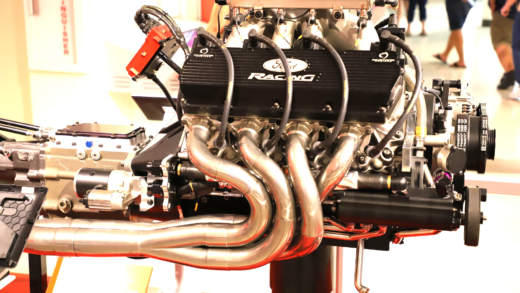NASCAR has evolved significantly since its inception in 1948, becoming a major part of American culture. The sport is governed by strict rules and regulations ensuring safety and fair competition. Teams prepare meticulously for races, focusing on car setup, strategy, and coordination. Sponsorship plays a crucial role in NASCAR, providing financial support and enhancing brand visibility. Fan engagement is prioritized through social media, events, and digital content. Lastly, NASCAR is rich with interesting facts, showcasing its storied history.
What is NASCAR?
NASCAR, or the National Association for Stock Car Auto Racing, is a prominent organization that governs the sport of stock car racing in the United States. Founded in 1948 by Bill France Sr., NASCAR has grown from its humble beginnings into a multi-billion dollar industry. Its essence lies in the thrill of high-speed competition, where drivers race modified production cars on oval tracks and road courses. The sport’s roots can be traced back to bootlegging during Prohibition, where drivers modified their vehicles to outrun the law. Today, NASCAR is synonymous with American motorsport, attracting millions of fans nationwide.
Types of NASCAR Races
NASCAR features a variety of race types that cater to different driving styles and fan preferences. The main categories include:
- NASCAR Cup Series: The premier series that showcases the best drivers and teams. It includes famous races like the Daytona 500.
- NASCAR Xfinity Series: The second-tier series, often seen as a stepping stone for drivers aiming to reach the Cup Series.
- NASCAR Craftsman Truck Series: This series features modified pickup trucks and provides a unique racing experience.
Each type of race offers its unique excitement, allowing fans to enjoy various forms of stock car racing.
NASCAR Racing Format
The format of NASCAR races is structured to maximize competition and entertainment. Typically, races consist of a set number of laps, often ranging from 100 to 500, depending on the event. Key components include:
- Practice Sessions: Drivers practice to fine-tune their cars and strategies before the race.
- Qualifying Rounds: Positions for the race are determined based on qualifying times.
- Green Flag: The race officially begins when the green flag is waved, signaling drivers to start racing.
- Cautions: Periodic caution flags may be raised for accidents or debris, allowing teams to strategize and make pit stops.
- Checkered Flag: The race concludes when the leader crosses the finish line after completing the designated laps.
This structured format ensures that every race is competitive and exciting for both drivers and fans.
Popular NASCAR Races
NASCAR hosts a variety of famous races that capture the hearts of fans and showcase the skill of drivers. Among the most iconic events are:
- Daytona 500: Known as “The Great American Race,” this is the season-opening event for the NASCAR Cup Series and is one of the most prestigious races in the world.
- Brickyard 400: Held at the Indianapolis Motor Speedway, this race combines the history of NASCAR with the legendary venue, making it a fan favorite.
- Coca-Cola 600: This endurance race at Charlotte Motor Speedway is the longest race in the NASCAR Cup Series, testing both driver and team stamina.
- Southern 500: A staple of NASCAR history, this race takes place at Darlington Raceway, known for its unique oval shape and challenging turns.
These events not only highlight the excitement of NASCAR but also draw massive crowds, making them significant moments in the motorsport calendar.
Famous NASCAR Drivers
NASCAR has seen many legendary drivers who have left their mark on the sport. Some of the most notable include:
- Dale Earnhardt: Known as “The Intimidator,” he was a seven-time champion whose aggressive driving style made him a fan favorite.
- Richard Petty: With 200 career wins, Petty is often regarded as the greatest NASCAR driver of all time and is a key figure in the sport’s history.
- Jeff Gordon: A four-time champion, Gordon helped elevate NASCAR’s popularity in the 1990s and early 2000s with his charismatic personality.
- Jimmie Johnson: Another seven-time champion, Johnson is known for his consistency and success in the modern era of NASCAR.
These drivers not only excelled on the track but also became cultural icons, influencing the sport’s growth and appeal.
NASCAR vs Other Motorsports
NASCAR stands out from other motorsports due to its unique characteristics. Here are some key differences:
- Track Type: NASCAR primarily races on oval tracks, whereas other motorsports like Formula 1 focus on road courses.
- Car Specifications: NASCAR vehicles are stock cars, heavily modified versions of production cars, while other racing series may use open-wheel or prototype designs.
- Fan Engagement: NASCAR emphasizes fan interaction, often integrating events and experiences that allow fans to connect with teams and drivers.
- Race Format: NASCAR races typically feature longer distances and more laps compared to the timed races seen in other formats.
These differences not only define NASCAR’s identity but also contribute to its dedicated fan base and cultural significance in American sports.
NASCAR Popularity Over the Years
NASCAR’s popularity has experienced significant fluctuations since its inception in 1948. Initially, the sport attracted a niche audience, primarily in the Southern United States. However, by the 1990s, NASCAR saw a massive surge in viewership, becoming a staple of American culture. This increase can be attributed to several factors:
- Media Coverage: Enhanced television coverage and the rise of cable networks brought NASCAR into living rooms across the nation.
- Diverse Marketing: Targeted marketing strategies helped to attract a broader demographic, including women and younger fans.
- Star Drivers: The emergence of charismatic drivers, like Dale Earnhardt and Jeff Gordon, helped to elevate the sport’s profile.
- Community Engagement: NASCAR’s efforts to engage with local communities through events and sponsorships further solidified its fan base.
Despite recent challenges, such as competition from other sports and changing viewer habits, NASCAR remains a powerful force in motorsport, continuing to adapt and innovate to maintain its popularity.
Key Rules and Regulations
NASCAR operates under a comprehensive set of rules and regulations designed to ensure fair competition and safety. Understanding these rules is essential for fans and participants alike. Some key regulations include:
- Car Specifications: All vehicles must meet strict guidelines regarding safety features, weight, and dimensions. Modifications must adhere to NASCAR’s standards.
- Race Procedures: Races have defined procedures, including qualifying, pit stops, and caution periods, to ensure organized and safe events.
- Penalties: Violations of NASCAR rules can result in penalties, including fines, points deductions, or disqualification from races.
- Safety Protocols: NASCAR emphasizes driver safety, mandating the use of helmets, fire suits, and specialized safety equipment.
These regulations not only protect the integrity of the sport but also ensure the safety of drivers and crews during competitions.
Team Preparation for Races
Preparing for a NASCAR race involves meticulous planning and teamwork. Each team must coordinate various aspects to ensure optimal performance on race day. Key elements of team preparation include:
- Car Setup: Teams spend hours adjusting the car’s setup, including tire pressure, suspension, and aerodynamics, tailored to the specific track conditions.
- Strategy Development: Teams analyze data from previous races to develop strategies for qualifying and race execution, focusing on tire management and pit stop timing.
- Practice Sessions: Before race day, teams participate in practice sessions to fine-tune their approach and ensure the driver feels comfortable with the car.
- Team Coordination: Effective communication among crew members is crucial for executing pit stops and responding to race situations.
This comprehensive preparation process reflects the high level of competition in NASCAR, where every detail can make a significant difference in performance.
Role of Sponsors
Sponsorship plays a pivotal role in NASCAR, providing financial support and promoting brand visibility. Sponsors contribute to the sport in various ways:
- Financial Investment: Sponsorship deals help teams cover operational costs, including car development, travel expenses, and team salaries.
- Brand Exposure: Companies leverage the large viewership of NASCAR races to promote their brands, often featuring logos prominently on cars and gear.
- Event Activation: Sponsors engage with fans through promotional events, giveaways, and experiential marketing, enhancing the overall fan experience.
- Long-term Partnerships: Many sponsors establish long-term relationships with teams, fostering brand loyalty among fans.
These partnerships not only support the teams financially but also enrich the NASCAR experience for fans, creating a vibrant ecosystem within the sport.
Fan Engagement
NASCAR excels in fan engagement, utilizing various strategies to connect with its audience. This engagement is vital for sustaining interest and loyalty among fans. Key methods include:
- Social Media Interaction: NASCAR actively engages with fans on platforms like Twitter, Facebook, and Instagram, sharing content and responding to fan inquiries.
- Fan Events: NASCAR hosts events such as meet-and-greets, fan festivals, and interactive experiences at race venues, allowing fans to connect with drivers and teams.
- Merchandising: The availability of team merchandise and memorabilia allows fans to express their support and feel connected to their favorite teams.
- Digital Content: NASCAR provides extensive digital content, including live race coverage, highlights, and behind-the-scenes footage, enhancing the overall viewing experience.
Through these initiatives, NASCAR not only strengthens its fan base but also creates a community that thrives on shared passion for the sport.
Interesting NASCAR Facts
As a rich part of American motorsport history, NASCAR is filled with intriguing facts and trivia. Here are a few interesting tidbits:
- First Race: The inaugural NASCAR race took place on June 19, 1949, at the Charlotte Motor Speedway.
- Daytona 500: Known as the Super Bowl of NASCAR, the Daytona 500 is the most prestigious race, with a history that dates back to 1959.
- Most Wins: Richard Petty holds the record for the most wins in NASCAR history, with 200 career victories.
- Fan Base: NASCAR boasts one of the largest fan bases in the United States, with millions tuning in for races each season.
These fun facts highlight the sport’s legacy and contribute to the excitement surrounding NASCAR racing.





Comments are closed.